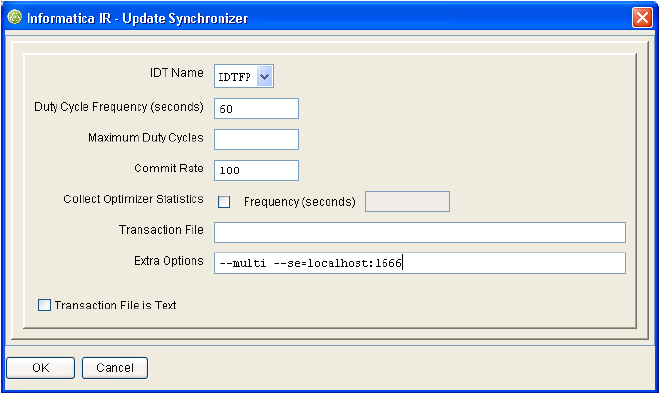MDM Registry Edition
- MDM Registry Edition 10.1 HotFix 1
- All Products


%SSABIN%\updmulti -r<Rulebase> -p<System> -h<Rulebase Server Host>:<Port> -e<IDT>--se=<Search Server Host>:<Port>[Optional Switches]
$SSABIN/updmulti -r<Rulebase> -p<System> -h<Rulebase Server Host>:<Port> -e<IDT>--se=<Search Server Host>:<Port>[Optional Switches]
Field
| Validation
|
|---|---|
Numeric - N
| Checks for a numeric value that aligns to the right and has leading zeros instead of spaces.
|
Character String - C
| Checks for spaces. Does not allow a null value (0x0000) as a padding character.
|
Unicode String - W
| Checks if the Unicode spaces (0x0020) has padding. Does not allow a null value (0x0000) as a padding character.
|
Field
| Validation
|
|---|---|
Character String - C
| Counts the number of rows where values in column are using full buffer. Reports an error when 99% of data meets this condition. This may not be an error and could be due to data truncation.
|
Unicode String - W
| Counts the number of rows where values in column are using full buffer. Reports error when 99% of data meets this condition. This may not be an error and could be due to data truncation.
Count the number of rows where values contains invalid Unicode spaces as padding character, that is mix of endianess 0x2000 and 0x0020. The problem is 0x2000 is also valid Unicode, so if the 75% or more rows are ending with 0x2000 character on a big endian system or 0x0020 on little endian system, then report it as an error.
Count the number of rows where values contains ASCII spaces instead of Unicode spaces as padding character, that is 0x2020 is used instead of 0x0020. Again the problem is 0x2020 is also a valid Unicode, so if the 75% or more rows are ending with 0x2020 character then report it as an error.
|
start /min %SSABIN%\updmulti -rodb:0:userid/password@service -p<System> -vp -h%SSA_RBHOST%--se=%SSA_SEHOST%